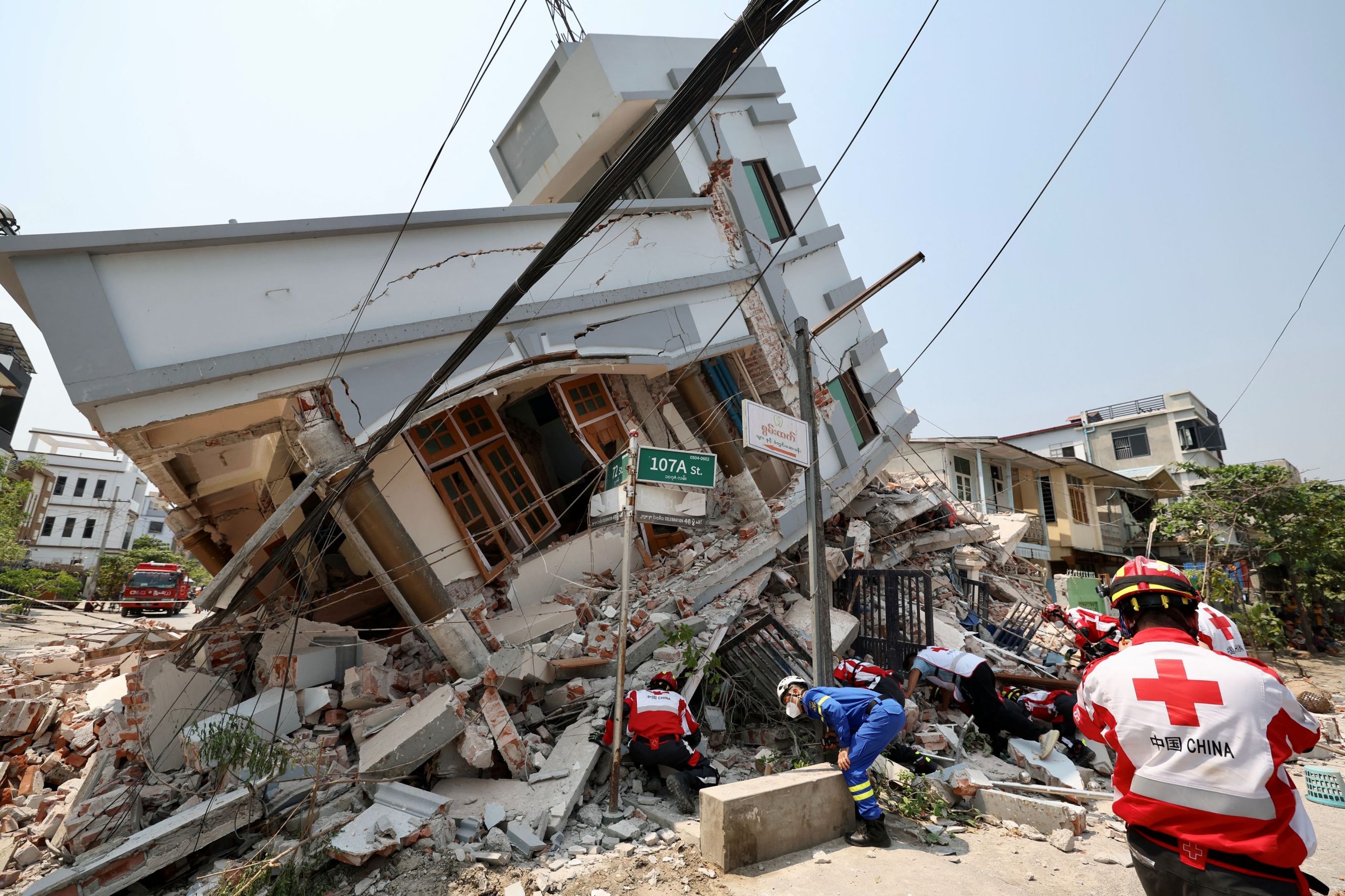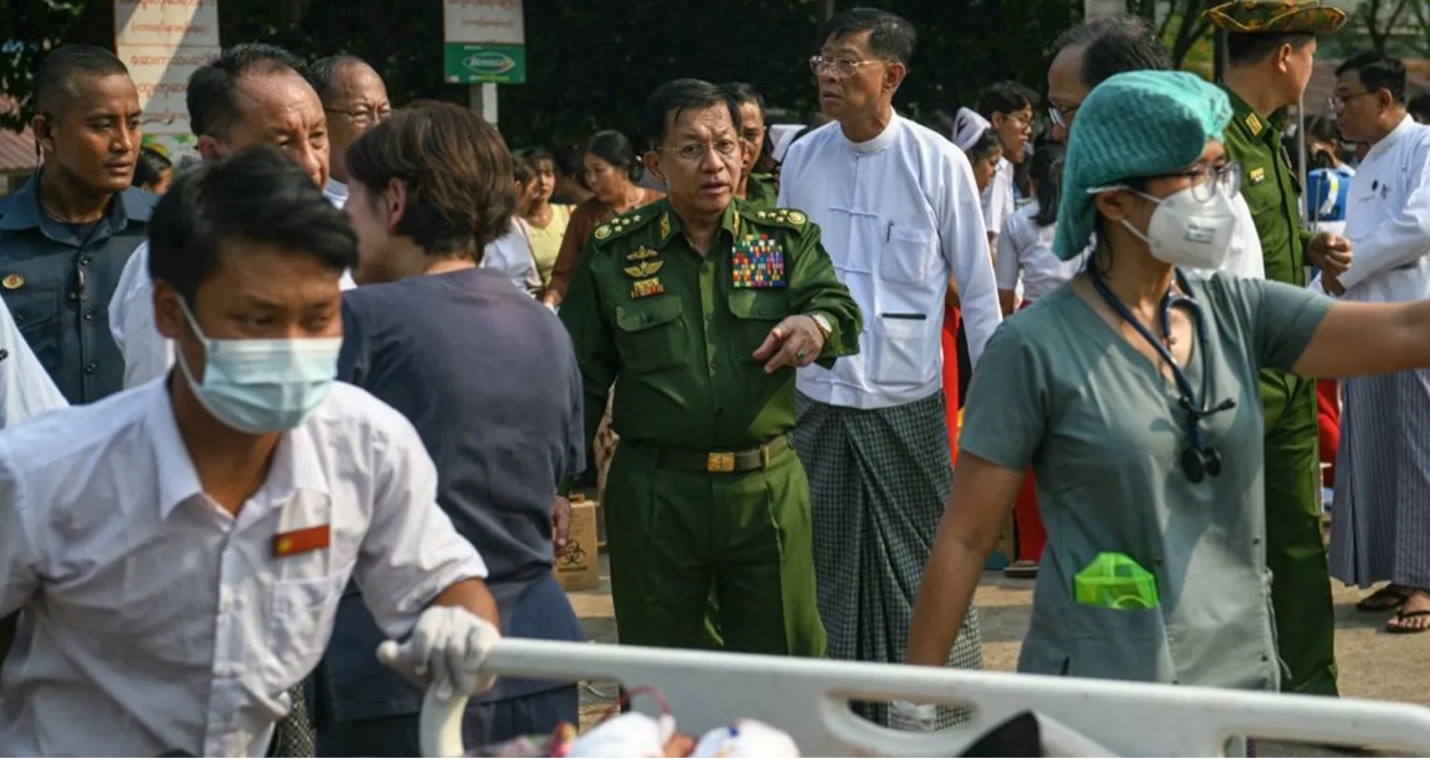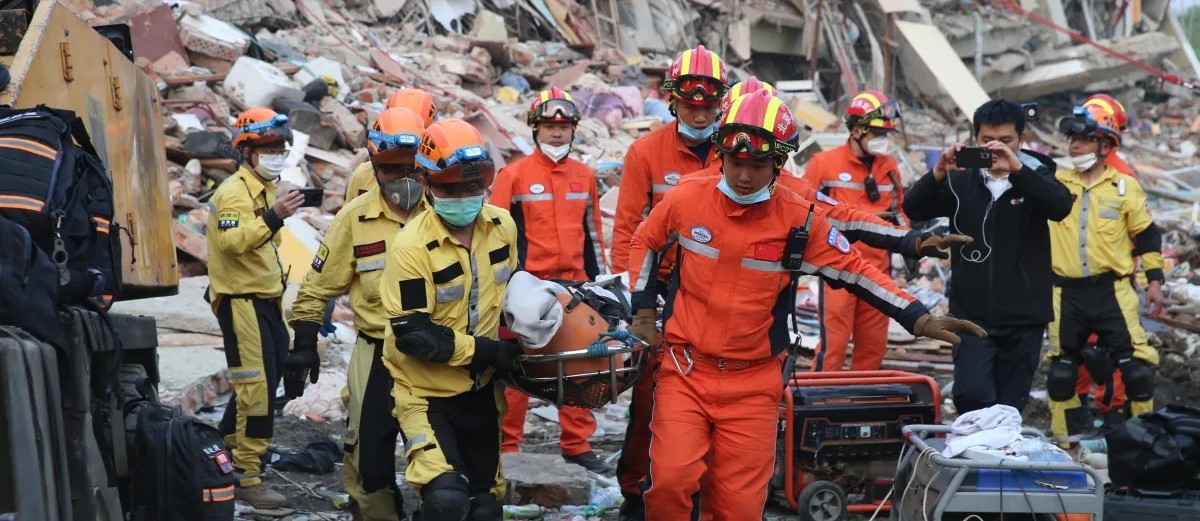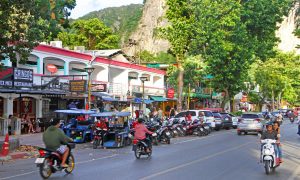Rescue teams continue to pull survivors from the rubble days after Myanmar’s devastating earthquake, but the window for finding more has all but closed. With thousands dead and relief efforts hampered by civil war, the disaster’s full scale is still unfolding.
Rescue workers in Myanmar pulled a 63-year-old woman from the rubble in the capital, Naypyitaw, on Tuesday—91 hours after a powerful earthquake struck the country. While it marked a rare moment of hope, the reality remains grim.
The death toll has surged past 2,700, and experts warn that the window for finding more survivors is rapidly closing. Myanmar, already grappling with an ongoing civil war, now faces an escalating humanitarian crisis as relief efforts struggle against logistical and political obstacles.
DEATH TOLL RISING AMID WIDESPREAD DEVASTATION
The 7.7-magnitude earthquake, which struck at midday on Friday, is now the second-most powerful in Myanmar’s recorded history, surpassed only by an 8.0-magnitude quake near Mandalay in 1912. According to Senior General Min Aung Hlaing, head of Myanmar’s military government, at least 2,719 people are confirmed dead, with more than 4,500 injured and over 450 still missing.

The true scale of the disaster is difficult to assess. Many regions remain cut off due to damaged roads, downed power lines, and disrupted communication networks. Most reports so far have come from Mandalay—Myanmar’s second-largest city and close to the epicentre—and Naypyitaw. In Mandalay alone, at least 259 bodies have been recovered, and hundreds remain unaccounted for.
The destruction extends far beyond residential areas. A monastery collapsed while hosting a religious exam, killing 50 Buddhist monks, and another 150 are believed to be buried under the rubble. In total, more than 10,000 buildings across Myanmar have either collapsed or suffered severe damage, according to the World Health Organization.
BEYOND MYANMAR’S BORDERS
The earthquake’s impact was felt beyond Myanmar, with tremors reaching neighbouring Thailand. In Bangkok, a high-rise under construction collapsed, killing at least 21 workers and injuring 34 more. Rescue teams have been working to clear the debris, but dozens are still missing.

Back in Myanmar, search-and-rescue operations paused briefly at midday on Tuesday as people stood in silence to honour the dead. But time is running out. Survival rates plummet after 72 hours, and as relief workers sift through the destruction, the focus is shifting from rescue to recovery.
RELIEF EFFORTS ARE SLOW AND LIMITED
Despite the scale of the crisis, foreign aid has been slow to arrive. The rescue efforts are hampered by a lack of heavy machinery, forcing workers in some areas to form human chains, passing debris piece by piece. A team of Chinese rescuers has managed to pull four people from the ruins, including a five-year-old child and a pregnant woman trapped for over 60 hours. Two teenagers were also able to crawl out of the rubble using their phone flashlights, later leading rescuers to their grandmother and sibling.

International assistance has begun trickling in, with teams from China, India, Russia, the United Arab Emirates, and several Southeast Asian nations joining the relief efforts. The United States has pledged $2 million in emergency assistance, though a small U.S. disaster assessment team only arrived on Tuesday after delays in obtaining visas.
Myanmar was already in the grips of a humanitarian crisis before the earthquake. The country’s civil war has displaced more than three million people, with nearly 20 million in need of humanitarian aid. Many have been living in makeshift shelters with minimal access to medical care.
Now, with water and sanitation systems destroyed and thousands of people crowded into temporary shelters, the risk of disease outbreaks is increasing. The UN Office for the Coordination of Humanitarian Affairs has warned of a rising threat from respiratory infections, dengue fever, and vaccine-preventable diseases like measles. The looming monsoon season adds another layer of urgency, as floods could further complicate relief efforts.
Despite being severely impacted by #MyanmarEarthquake, @ochamyanmar staff has swiftly mobilized to deliver life-saving aid.
— UN Humanitarian (@UNOCHA) April 1, 2025
Many have lost their homes and belongings. But they are rushing to help people in affected areas.
You can help too. Please donate: https://t.co/n6W8cM8CXX pic.twitter.com/mos4N4r7ry
POLITICAL VOLATILITY HAMPERING AID
Compounding the crisis is Myanmar’s ongoing civil war. The military government seized power in 2021, overthrowing the democratically elected government of Aung San Suu Kyi. Since then, the country has been embroiled in conflict, with anti-military forces controlling large parts of the country. Even before the earthquake, many areas were too dangerous for aid workers to access.
The political situation remains volatile. The opposition National Unity Government (NUG), formed by ousted lawmakers, has called for a unilateral ceasefire to allow aid to reach those in need. Another armed opposition group, the Three Brotherhood Alliance, has also announced a month-long ceasefire.
However, Senior General Min Aung Hlaing has shown little willingness to follow suit. In a speech on Tuesday, he stated that the military would continue operations against some ethnic armed groups, describing their military training as “hostile action.”

AMID MYANMAR’S CRISIS, QUAKE A TEST OF FOREIGN WILL
Whether aid ever reaches those who need it most remains uncertain. Myanmar’s military has a history of obstructing foreign assistance. After Cyclone Nargis in 2008—one of the deadliest disasters in the country’s history—the military initially refused outside help, leading to unnecessary delays and additional loss of life. Even when international aid was allowed, it came with severe restrictions.
This time, Min Aung Hlaing has stated that Myanmar will accept foreign aid, but skepticism remains, and some local critics have suggested that the general will merely use the disaster as a photo op for political gain. The opposition NUG has urged the international community to ensure that relief efforts bypass military control, warning that any obstruction could have devastating consequences.

The UN’s special rapporteur on human rights in Myanmar, Tom Andrews, echoed these concerns, stating on social media that humanitarian aid should take precedence over military operations. “The focus in Myanmar must be on saving lives, not taking them,” he said.
As the death toll rises and relief efforts struggle against political and logistical barriers, Myanmar finds itself in an unimaginable state. The earthquake has compounded an already dire humanitarian situation, testing both the resilience of its people and the willingness of the regional and global communities to step in against the backdrop of a civil war and an intractable military junta.
With thousands still missing and millions more at risk of disease and displacement, the days ahead will be critical. For now, rescue workers continue their desperate search, knowing that every passing hour diminishes the chances of finding more survivors.

"ExpatGo welcomes and encourages comments, input, and divergent opinions. However, we kindly request that you use suitable language in your comments, and refrain from any sort of personal attack, hate speech, or disparaging rhetoric. Comments not in line with this are subject to removal from the site. "

















